
Web3 vs. Web2 Content Ownership Comparison
Web2 Social Media
Traditional platforms where the company owns your content and has control over your data.
- Content owned by platform
- Limited monetization options
- Platform can delete content
- Account tied to username/password
Web3 Social Media
Decentralized platforms where you own your content through blockchain technology.
- Content owned by creator
- Royalty-based monetization
- Immutable content records
- Wallet-based identity
Ownership Comparison Table
| Aspect | Web2 | Web3 |
|---|---|---|
| Content Title Ownership | Platform license; creator retains limited rights | NFT on-chain record; creator holds full ownership |
| Monetization | Ad revenue sharing, limited brand deals | Direct sales, royalties on every resale via smart contracts |
| Censorship | Subject to platform policy and takedowns | Immutable ledger; only content owners can remove tokens |
| Data Portability | Export tools are limited, often proprietary | Wallet-based identity enables cross-platform migration |
| User Control over Algorithm | Opaque feed algorithms owned by platform | Community-governed token incentives, transparent rules |
Benefits for Creators
Permanent Provenance
Every piece of content carries a traceable history, reducing plagiarism.
Ongoing Revenue Streams
Smart-contract royalties keep creators earning as their work resurfaces.
Community Governance
Token-based voting lets creators shape platform rules and policies.
Current Challenges
- High gas fees on some blockchains
- Technical onboarding complexity
- Limited network effects
- Regulatory uncertainty around NFT royalties
These challenges are actively being addressed through Layer-2 solutions, improved UX, and regulatory clarity.
Getting Started Guide
- Create a wallet (MetaMask, Trust Wallet)
- Fund the wallet with crypto
- Choose a Web3 social platform
- Mint your first NFT post
- Publish and share your content
- Track royalties and engage with community
This process transforms regular social activity into an asset you truly own.
Key Takeaways
- Web3 social media puts ownership of posts, likes, and profiles on the blockchain.
- Non‑fungible tokens (NFTs) and smart contracts act as the legal and technical backbone for that ownership.
- Creators can earn royalties from every resale, something traditional platforms don’t offer.
- High gas fees, wallet setup, and a learning curve are the main barriers today.
- Cross‑chain identity solutions are emerging to make moving between platforms painless.
Ever posted a photo on Instagram and wondered who really owns it? In the classic Web2.0 world, the platform’s terms of service give the company a broad claim over every image, video, or comment you upload. Web3 content ownership is a different story. By moving the social layer onto a blockchain, creators keep a verifiable, immutable record of who owns what - from a single tweet‑like post to an entire follower network.
What is Web3 Social Media?
Web3 social media refers to any networking service built on decentralized protocols where the data layer lives on a distributed ledger instead of a corporate data‑center. Unlike Facebook or Twitter, there is no single entity that can rewrite or delete your content without your consent. The backbone of this model is the combination of three technical pillars:
- Non‑fungible tokens (NFTs) - unique blockchain tokens that represent a piece of content.
- Smart contracts - self‑executing code that defines usage rights, royalty splits, and governance rules.
- Decentralized identity (DID) - wallet‑based authentication that lets you carry your social profile across any compatible app.
These pieces work together to turn a simple “like” into a tradable digital asset that can be tracked forever.
How NFTs Create Verifiable Ownership
When you mint an NFT for a social post, the blockchain records a cryptographic hash of that content. That hash becomes the token’s fingerprint. Because the ledger is immutable, anyone can prove you own the post by checking the token’s “owner” address. The NFT also carries metadata - title, description, and optionally a link to the original media file stored on IPFS or another decentralized storage system.
Smart contracts attached to the NFT can enforce royalty rules. For example, a creator might set a 5% royalty so that every time the token is resold on a marketplace, a small amount automatically flows back to the original wallet. That mechanism is impossible on a platform that treats content as a “service” rather than a property.
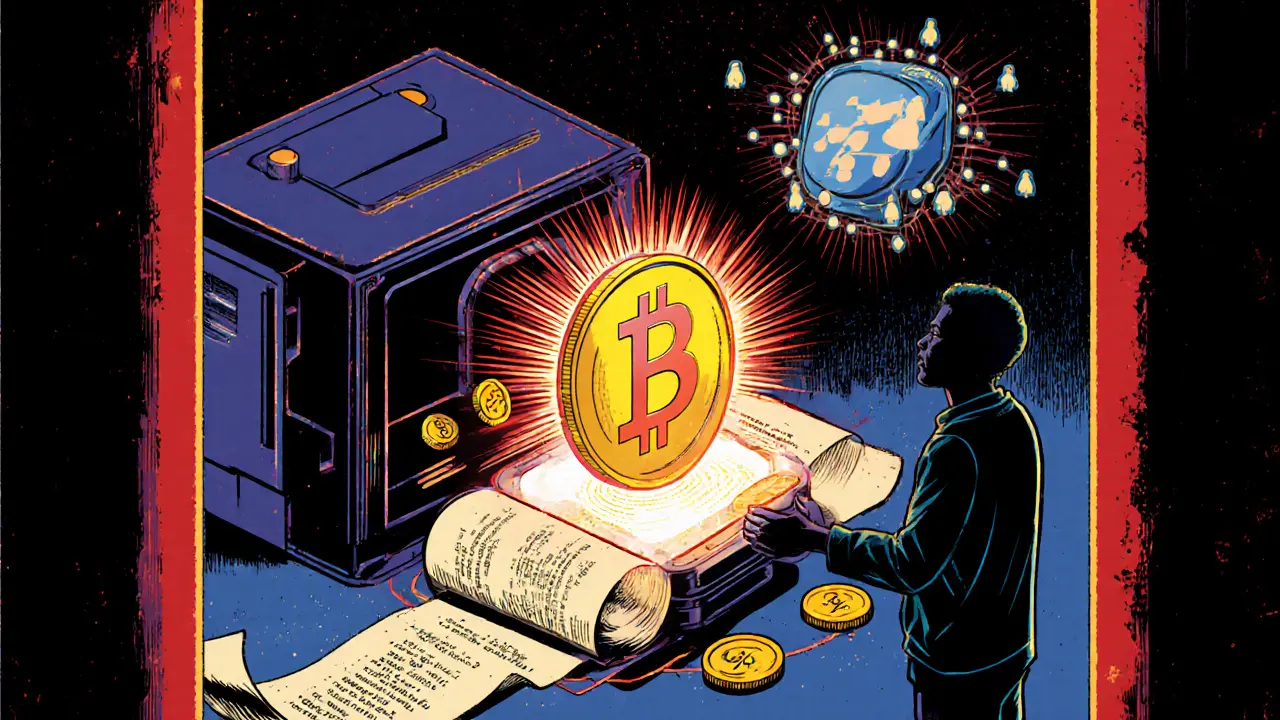
Smart Contracts: The Rule‑Engine Behind Ownership
Smart contracts are tiny programs that run on the blockchain whenever a token changes hands. They can be as simple as “transfer ownership” or as complex as “allow the holder to grant a license to display the image for 30days.” In practice, most Web3 social platforms ship with a default contract that includes:
- Transferability - who can sell or give away the token.
- Royalty distribution - percentage and recipient address.
- Access control - whether the content can be copied, remixed, or displayed publicly.
Because the code is public, users can audit it before they commit any value, eliminating the hidden‑terms problem that plagues traditional platforms.
Decentralized Identity and Wallets
Instead of a username/password, Web3 uses a cryptocurrency wallet (MetaMask, Trust Wallet, etc.) to prove who you are. The wallet holds a private key; the corresponding public address becomes your on‑chain identity. This approach has two big benefits:
- Portability - you can log into any Web3 social app that accepts the same wallet, taking your followers, NFTs, and reputation with you.
- Data sovereignty - only you control the keys, so no platform can freeze or seize your account without your consent.
For newcomers, the biggest hurdle is safely storing the seed phrase. Lose it, and you lose access to every token, including your social profile.
Web2 vs. Web3: Ownership at a Glance
| Aspect | Web2 Platforms | Web3 Platforms |
|---|---|---|
| Content title ownership | Platform license; creator retains limited rights | NFT on‑chain record; creator holds full ownership |
| Monetization | Ad revenue sharing, limited brand deals | Direct sales, royalties on every resale via smart contracts |
| Censorship | Subject to platform policy and takedowns | Immutable ledger; only content owners can remove tokens |
| Data portability | Export tools are limited, often proprietary | Wallet‑based identity enables cross‑platform migration |
| User control over algorithm | Opaque feed algorithms owned by platform | Community‑governed token incentives, transparent rules |
Benefits for Creators
Early adopters of Web3 social media report three recurring wins:
- Permanent provenance - every piece of content carries a traceable history, which critics say reduces plagiarism.
- Ongoing revenue streams - smart‑contract royalties keep creators earning as their work resurfaces on secondary markets.
- Community governance - token‑based voting lets creators shape platform rules, from moderation policies to feature roadmaps.
These advantages directly address the “creator‑compensation gap” that has plagued platforms like YouTube and Instagram for years.
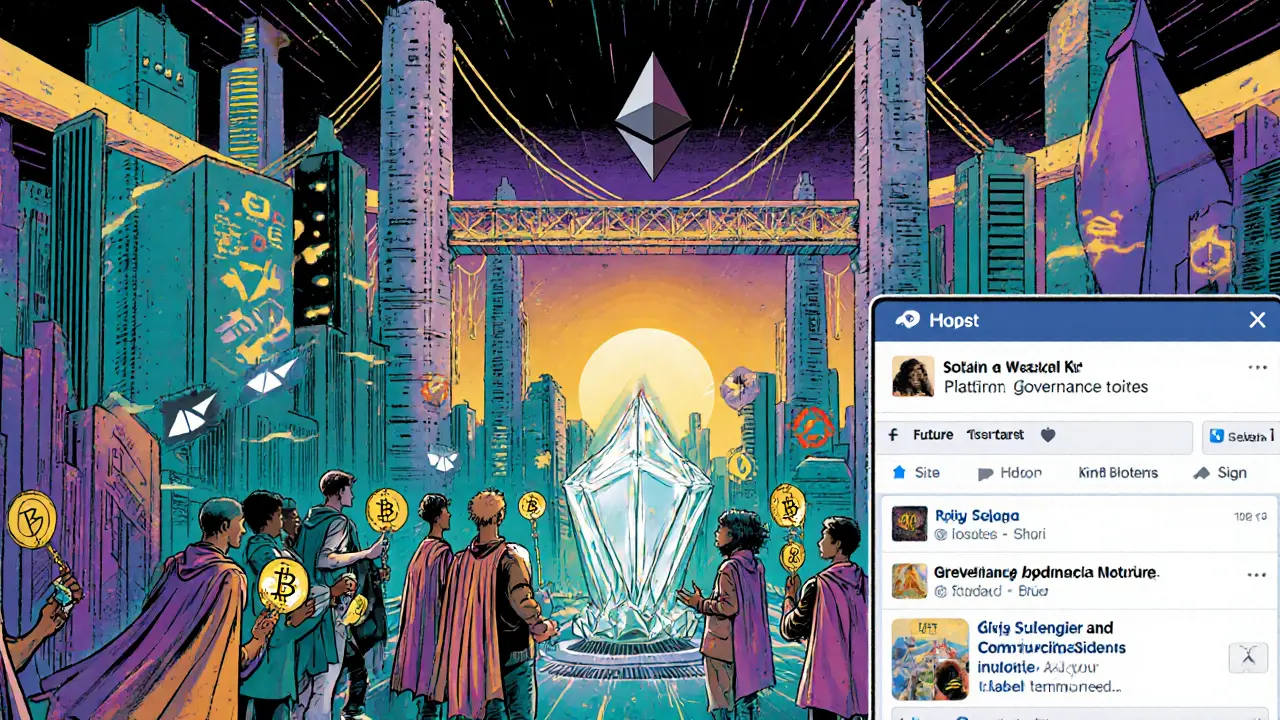
Current Challenges and How to Overcome Them
Despite the hype, Web3 social media still stumbles over a few practical obstacles:
- High transaction (gas) fees - On Ethereum’s mainnet, posting a simple text tweet can cost $5-$15 during peak periods. Solutions include Layer‑2 rollups (Optimism, Arbitrum) and alternative low‑fee chains (Polygon, Solana).
- Technical onboarding - Setting up a wallet, buying crypto, and minting an NFT feels daunting. Many platforms now embed “social wallet” UX that auto‑creates a wallet and covers first‑time gas with a “sponsored mint.”
- Network effect - With user bases in the low‑millions, content discovery is still limited. Partnerships with mainstream brands and cross‑chain bridges aim to pull more users into the ecosystem.
- Regulatory uncertainty - Some jurisdictions treat NFTs as securities, which could affect how royalties are taxed. Staying compliant means using jurisdictions with clear crypto guidelines and offering transparent tax reports.
Each pain point is actively being addressed. For instance, the latest version of the Lens Protocol now batches multiple post interactions into a single on‑chain transaction, slashing fees by up to 80%.
Step‑by‑Step: Getting Started with Web3 Content Ownership
- Create a wallet: Download MetaMask or a mobile wallet, write down the seed phrase, and set a strong password.
- Fund the wallet: Purchase a small amount of ETH or the native token of the chain you’ll use (e.g., MATIC for Polygon).
- Choose a Web3 social platform: Lens, Mirror, or Farcaster are popular for text‑based posts; Audius for music, and NiftyIsland for visual art.
- Mint your first NFT post: Click “Create Post,” attach media, and hit “Mint.” The platform will generate a smart contract with default royalty settings.
- Publish and share: Your post now has a unique URL that points to the token ID. Share it like any other link; followers can view it directly on IPFS.
- Track royalties: Most platforms provide a dashboard showing secondary‑sale royalties in real time.
- Engage the community: Earn governance tokens by interacting, then vote on platform upgrades or moderation policies.
Following these steps turns a regular social activity into an asset you truly own.
Future Outlook: Where Is Content Ownership Headed?
Analysts predict three key trends for the next five years:
- Cross‑chain identity layers - Projects like ENS and Unstoppable Domains will let a single wallet ID work across Ethereum, Solana, and emerging L2s, making migration seamless.
- Lower‑cost scaling solutions - Rollups and sharding promise to bring gas fees down to pennies, removing the biggest friction for everyday posting.
- Hybrid platforms - Major incumbents (Twitter, Meta) are experimenting with on‑chain verification features, suggesting a future where Web2 and Web3 coexist, with content ownership gradually migrating to the blockchain.
In short, the idea of owning every like, comment, and follower is moving from a niche experiment to a mainstream expectation.
Frequently Asked Questions
Do I need to be a developer to use Web3 social media?
No. While the underlying tech is complex, most platforms now offer point‑and‑click interfaces that abstract away the blockchain details. You only need to manage a wallet and understand basic crypto concepts.
What happens to my content if the blockchain I used gets deprecated?
Blockchains are designed to be immutable, but if a network shuts down, most projects migrate tokens to a new chain via a community‑voted “bridge.” Your ownership records would move with the token, preserving provenance.
Can I delete a post after I mint it as an NFT?
Technically the token remains on‑chain forever, but you can burn the NFT (destroy it) if the smart contract includes a burn function. Burning removes the token from circulation, effectively erasing the on‑chain reference.
Are there tax implications for earning royalties on NFT posts?
Yes. In most jurisdictions, royalty income is treated as capital gains or ordinary income. Many wallets now provide transaction histories that can be exported for tax reporting.
How do I protect my private key from theft?
Store the seed phrase offline (paper or hardware wallet), never share it, and enable biometric or PIN protection on mobile wallets. Treat it like the keys to a safe deposit box.



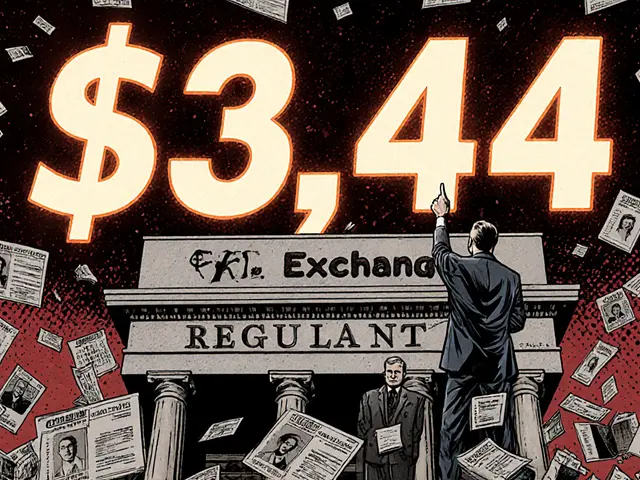
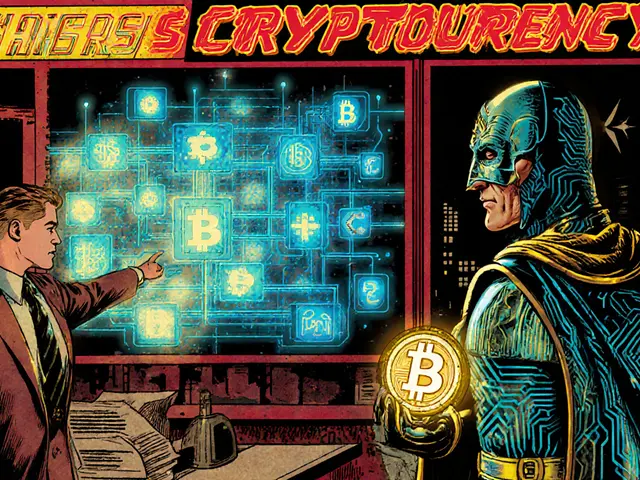
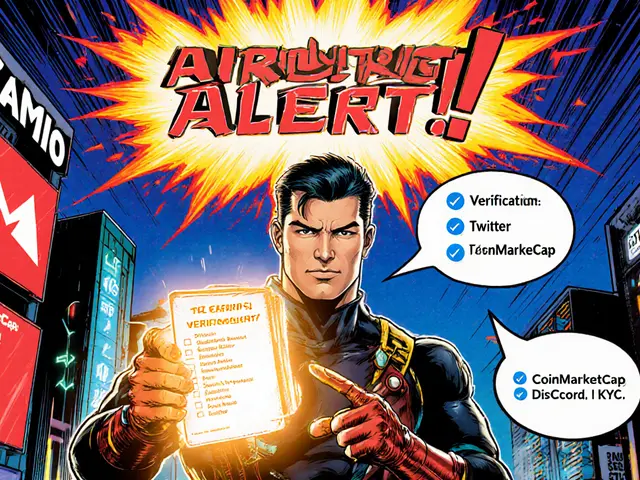
There are 9 Comments
Jack Stiles
Yo, this whole Web3 ownership vibe feels like the internet finally grew up a bit. It's cool to see creators actually get a slice of the pie.
Ritu Srivastava
We must ask ourselves whether handing over our digital lives to corporations was ever ethically defensible. The shift to true ownership is not just a tech upgrade-it's a moral imperative.
Liam Wells
Whilst the exposition delineates the advantages of decentralized provenance, one must scrutinize the scalability constraints intrinsic to current blockchain protocols; the latency and throughput limitations remain non‑trivial, thereby warranting cautious optimism.
Caleb Shepherd
Ever notice how every time a new "decentralized" platform pops up, the same Silicon Valley giants start buying up the patents? It's like they're waiting for the perfect moment to re‑centralize everything under a different name.
Darren Belisle
Honestly, it's refreshing to witness a community rally around genuine creator rights. When each post carries its own passport, we all win-artists, fans, and even the platforms that adapt.
manika nathaemploy
i feel u, ritu. it's kinda crazy how we let big corp take credit for our work. hope this new wave actually sticks.
Brian Lisk
First off, I get the skepticism about hidden agendas, but the architecture of Web3 is fundamentally different from legacy platforms, which gives us a tangible path to real ownership. When you mint an NFT of your post, you embed a cryptographic fingerprint that can't be altered without consensus, effectively locking in provenance. This means that every share, remix, or resale can automatically route a royalty back to you, something that was impossible under the old ad‑based models. Yes, the initial hype was noisy, and some projects were clearly cash grabs, but the underlying protocols have matured dramatically over the past few years. Layer‑2 solutions now push transaction costs down to pennies, removing one of the biggest barriers to entry. Moreover, wallet abstraction layers are simplifying the onboarding experience, so you no longer need a PhD in cryptography to get started. Communities are also building shared identity standards, like ENS and decentralized identifiers, which let you carry your reputation across multiple apps. The governance models, though still nascent, are moving toward token‑based voting that actually gives creators a voice in platform decisions. In practice, this translates to fewer arbitrary bans and more transparent algorithmic curation. While there will always be actors trying to game the system, the transparent ledger makes it far easier to spot and call out abuse. We're already seeing artists earn passive income from secondary sales of their memes and short videos-proof that the model works. As with any technological shift, there will be growing pains, but the trajectory points toward more equitable value distribution. So, instead of dismissing the whole movement, I encourage creators to experiment, learn, and shape the future. In the end, the power to control your own digital narrative is too valuable to ignore.
Mark Bosky
From an implementation standpoint, the primary considerations when transitioning to a Web3 social platform include wallet integration, metadata storage solutions such as IPFS, and the selection of an appropriate layer‑2 chain to minimize gas fees. Developers should also incorporate royalty standards like EIP‑2981 to ensure consistent royalty payouts across marketplaces. Additionally, offering a user‑friendly dashboard for tracking earnings can greatly enhance adoption among non‑technical creators.
Richard Bocchinfuso
Look, if we keep letting these big companies own our content, we’re just feeding the same profit monster. It’s high time we take back what's ours.
Write a comment
Your email address will not be published. Required fields are marked *